
The short answer to this is “often”. There is a lot of day-to-day variation, especially when the weather is quite active: a stiff breeze will disperse air pollution quite effectively. However, on average, most pollutants are at higher concentrations during the winter, and this is due to two main factors.
First, when it is cold we burn more fuel. These are fuels to warm our homes, such as gas or oil in a boiler, wood or coal on a fire, or fuels for power stations to generate electricity. All these combustion processes put pollutants, such as fine particulates and sulphur dioxide, into the atmosphere close to ground. We also burn more fuel in vehicles because the cold and wet weather makes walking and cycling a less attractive option for travel.
The other main factor is the weather. Often, we experience prolonged periods of cold, still weather. This is a result of high pressure systems that build up and trap pollutants close to the ground. This is especially pronounced in urban areas with high concentrations of people and traffic, but even in the countryside, pollution from home heating (especially wood burners) can become a local problem.
When you combine the generally poorer outdoor air, which will find its way indoors, with the greater amount of indoor activity that happens at this time of year, then it is pretty certain that indoor air quality will deteriorate unless you do something about it.
What do we mean by Air Quality and why does it matter?
The atmosphere is composed of approximately 78% nitrogen, 21% oxygen, 0.9% argon and 0.1% of all other gases (including 0.04% carbon dioxide).
About 80% of the entire atmosphere is within 15km (10 miles) of the earth’s surface (which is only 0.2% of the earth’s diameter) – a fragile and wafer-thin envelope upon which all life depends.
The air that we breathe is made up of a mixture of gases, vapours and very tiny particles. Some of those components are essential for our survival (oxygen, being the most obvious example), most of the rest are harmless, but some can be troublesome, even in really low concentrations. Those troublesome components are what we would define as pollutants, and they are made up of particulates and a variety of chemicals (some of which are naturally-occurring). These pollutants can have an adverse impact on our health.
The amount of pollutants in the air that we breathe determines what we call air quality, and air quality can vary considerably from place to place and season to season and is influenced by weather, climate, volcanic activity and, most profoundly, by human activity.
Did you know…?
- Poor air quality is responsible for 10 times as many deaths per year than malaria. According to the World Health Organization, poor air quality is responsible for 7 million premature deaths every year, including over 3 million premature deaths caused by household air pollution (overwhelmingly in developing countries).
- In the United Kingdom, a rich nation, poor air quality contributes to between 28,000 and 36,000 premature deaths a year. Public Health England states that ‘In the UK, air pollution is the largest environmental risk to public health’. Between 2017 and 2025, the costs to the NHS as a result of air pollution are estimated to be in the order of £1.6 billion.
- Having said that, the concentrations of most pollutants in the UK is now about a third of what they were in 1970, largely as the result of cleaner vehicle fuels and the near elimination of coal as a fuel for electricity generation and domestic heating.
- Poor air quality affects our health in many ways. The WHO estimates that in 2016, worldwide, some 58% of outdoor air pollution-related premature deaths were due to ischaemic heart disease and stroke, while 18% of deaths were due to chronic obstructive pulmonary disease and acute lower respiratory infections respectively, and 6% of deaths were due to lung cancer.
What causes poor indoor air quality?
The quality of indoor air is determined by the concentrations of a variety of components, and can be divided into those that are generated in the home and those that are brought in from the outside. They can also be divided according to their nature.
The most serious pollutants found in the home, and outside, are fine particulates. These are tiny particles, usually of soot emitted from vehicles and other combustion processes. They are between 2.5μm and 10μm in diameter and can be breathed deeply into the lungs, where they remain or break down – they don’t get coughed or sneezed out of our airways like dust and pollen. For comparison, human hair is typically between 50μm and 90μm in diameter.
Other pollutants that can affect our long-term health include a variety of volatile organic compounds, as well as other combustion products such as various oxides of nitrogen and sulphur.
Ozone produced and trapped in the lower atmosphere can also be harmful (when it is at the top of the atmosphere it provides vital protection against UV radiation).
Very many of the pollutants we find indoors are carried in from the outside – especially if you live in an urban environment or near a busy road. However, a lot are also generated within the home.
Cleaning products, room scenters and cosmetics all contain volatile organic compounds, as do alcoholic drinks and foods (if they didn’t, you wouldn’t be able to smell them). Additionally VOCs can be emitted from products such as adhesives, particle boards, paints and wood stains – and even Christmas trees. That fresh, piney smell is loaded with terpenes and other VOCs. Levels of many VOCs can be 5 to 10 times higher indoors than outdoors, and VOC concentrations of as little as 25mg/m3 have been found to induce airway inflammation and irritation.
Homemade pollution: what is it and how do we know?
I’m very interested in seeing how indoor air quality changes in my home, and I have a couple of monitors that give me the information I want, including the monitor that comes with Vitesy’s Eteria air purifier.
Here are the charts for my living room over the last 7 days (recorded on a professional-grade Air Gradient monitor):
The first chart shows the concentration of PM2.5 particulates. These are the fine particles that can be breathed deep into the lungs. There are some concerning spikes (although very short-lived) and I think that they correspond to the times when my log burner was first lit, before it started to burn most efficiently. In some indoor environments, high levels of particulates will be generated by smoking – second-hand tobacco smoke is a major contributor to poor respiratory health.
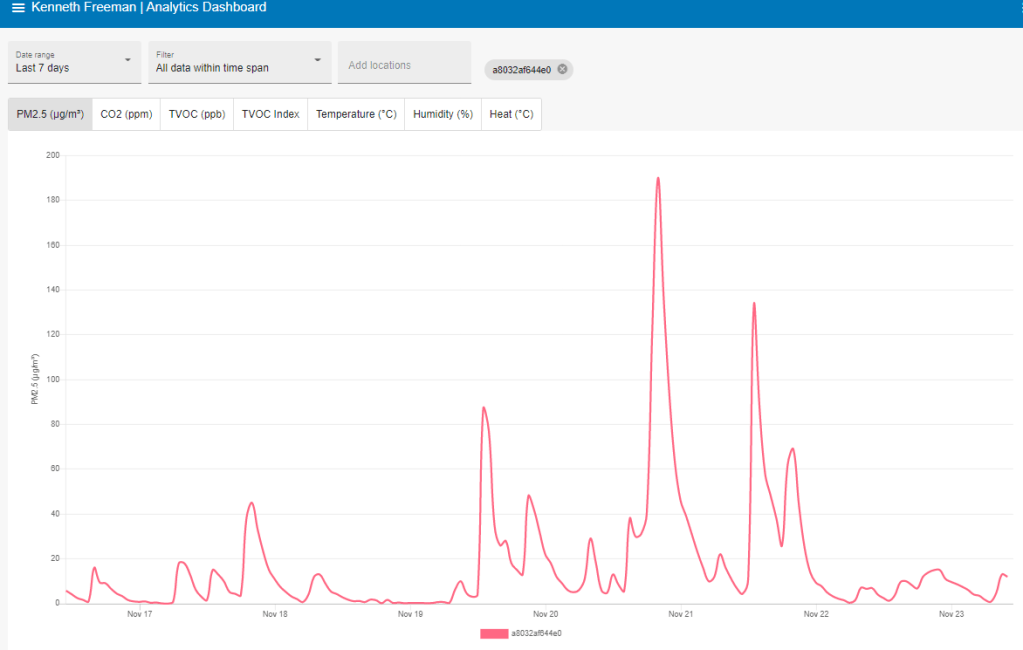
The middle trace relates to carbon dioxide. This is not, in itself, a serious pollutant, but is a very good proxy measurement for ventilation, and it also relates to the number of people in the room. There are some very good reasons for measuring carbon dioxide – especially in places like offices or schools, but less so in the home.
Recent research has shown that there is a relationship between carbon dioxide (as a proxy for ventilation), humidity, temperature and the risk of catching airborne viruses, such as SARS CoV-2 (Covid), and many air monitor manufacturers have incorporated an algorithm to give an indication of risk.
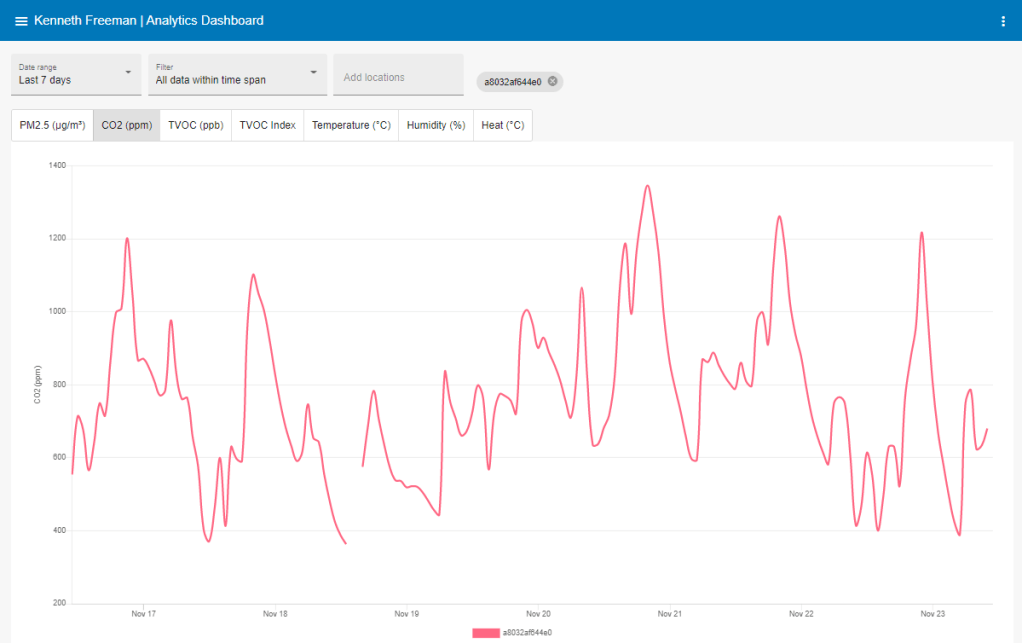
The next chart (below) is a record of total volatile compounds (tVOC). These can be generated in many ways and they spread around the air very quickly. In my case, I suspect that the spikes corresponded mainly to cooking.
Interestingly, on six occasions, VOC concentrations went above 25mg/m3, which is the level at which irritation and to the airways of sensitive people can occur.
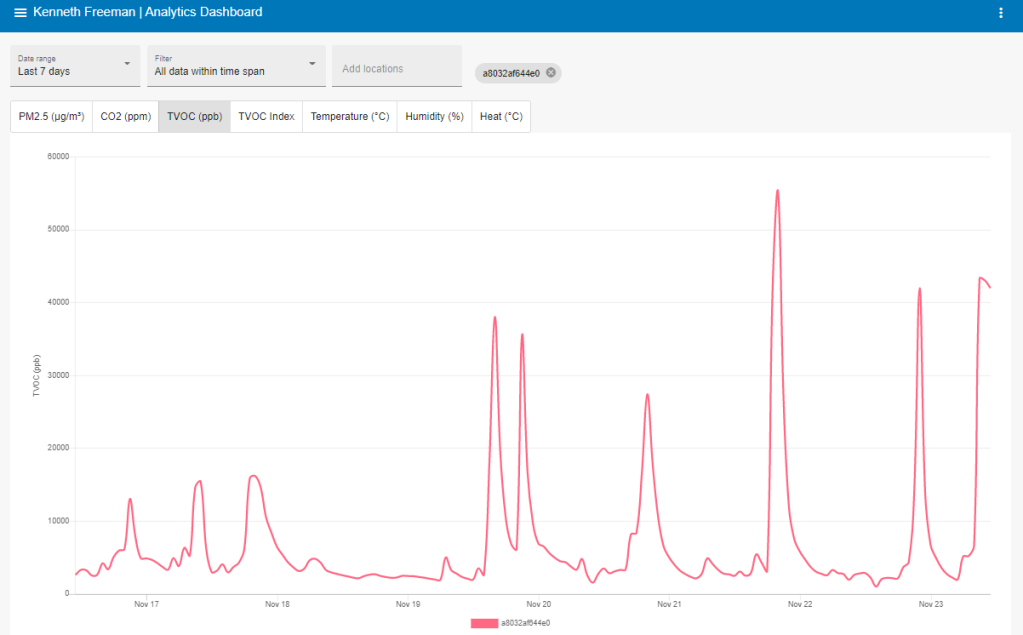
I live in a semi-rural area away from busy roads. Whilst there is some traffic, most of the pollution inside my home is generated inside my home. Some external pollutants will find their way indoors (possibly by going up my chimney and back into the house when a door or window was opened), but local air outdoor quality at the time was very good – it has been windy and wet, which means that pollutants are well dispersed.
You can check local air quality measurements and forecasts on the UK Government’s UK Air Information Resource.
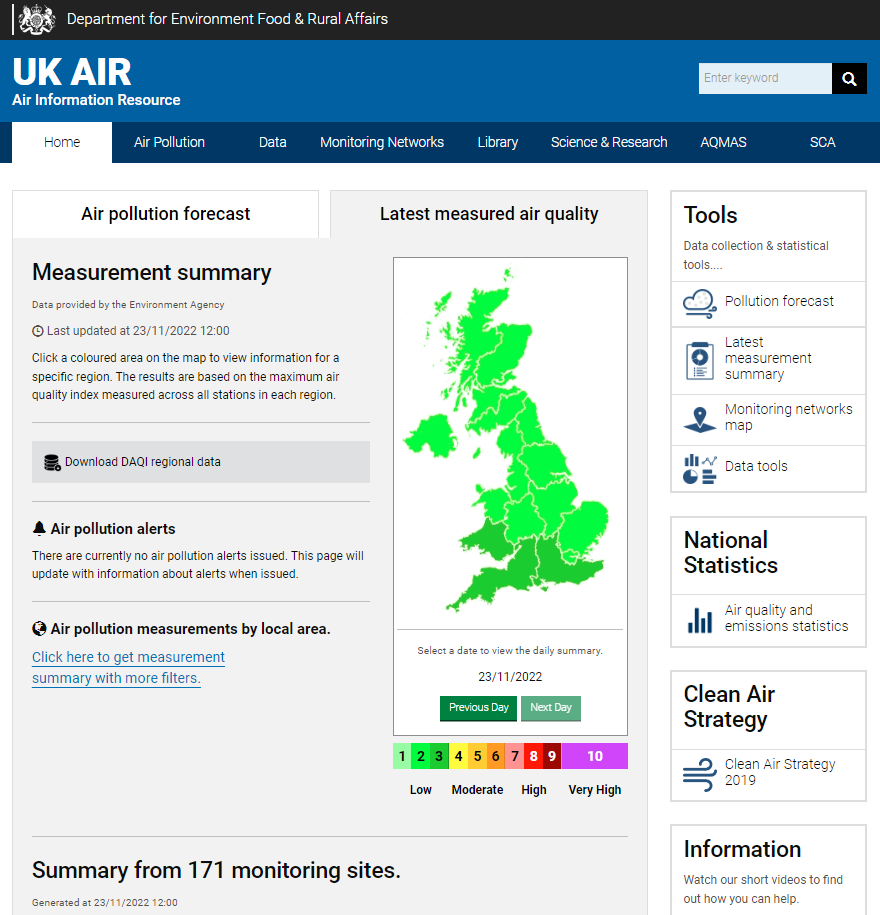
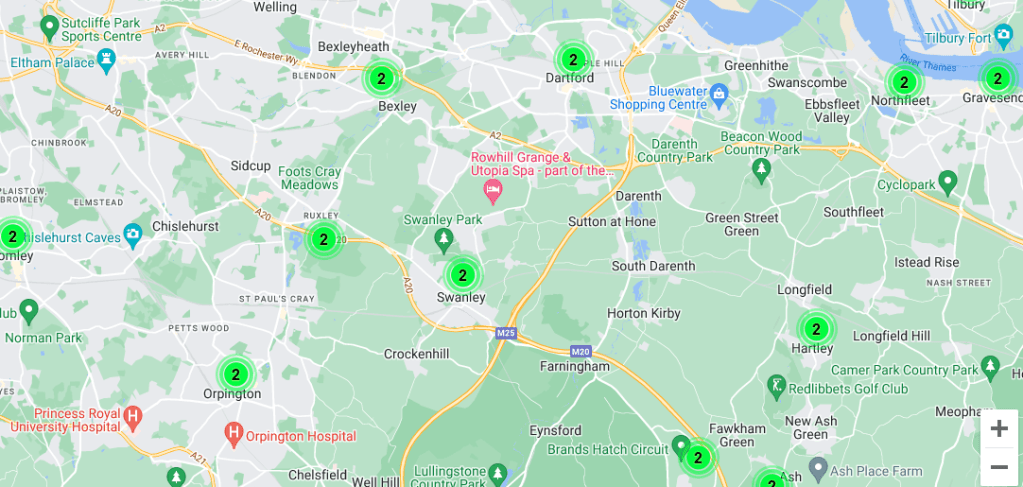
What can we do about it?
Knowledge is power. If you know what the air quality is like in the home (and outdoors), then you are in a good position to be able to do something about it.
Air purifiers, such as Vitesy’s new Eteria and their Natede products, are not only excellent at removing pollutants, but they are packed with top quality sensors, which can supply up-to-date information via the web to a smartphone. The screenshot here shows VOCs recorded on the Eteria air purifier that I have in my living room.
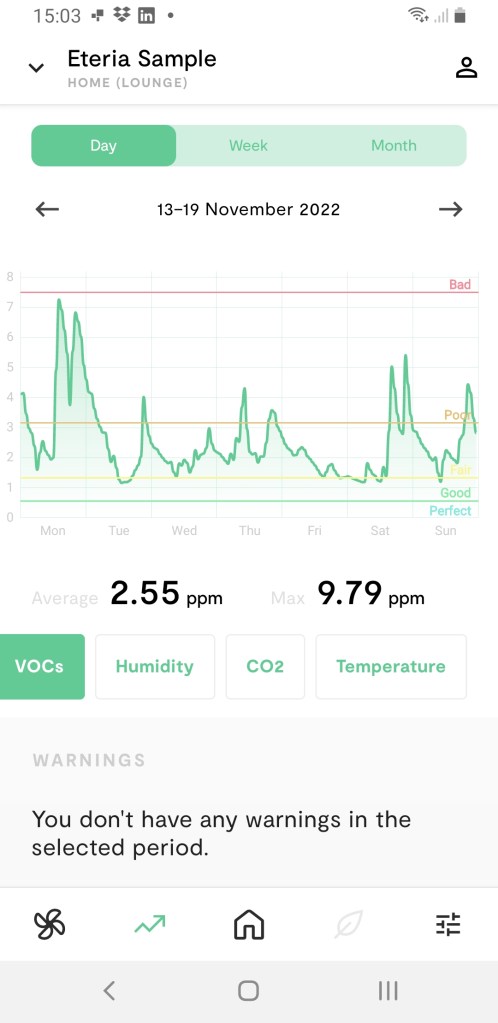
Once you know about the various air quality parameters, you can then do something about it – or let a smart device like Eteria do it for you.
As well as the suite of sensors in the device, there is an algorithm that tells it when to act, and with how much effort.
However, air purifiers can only operate over a small distance – unless you have room for a fridge-sized device, so there are other things you can do.
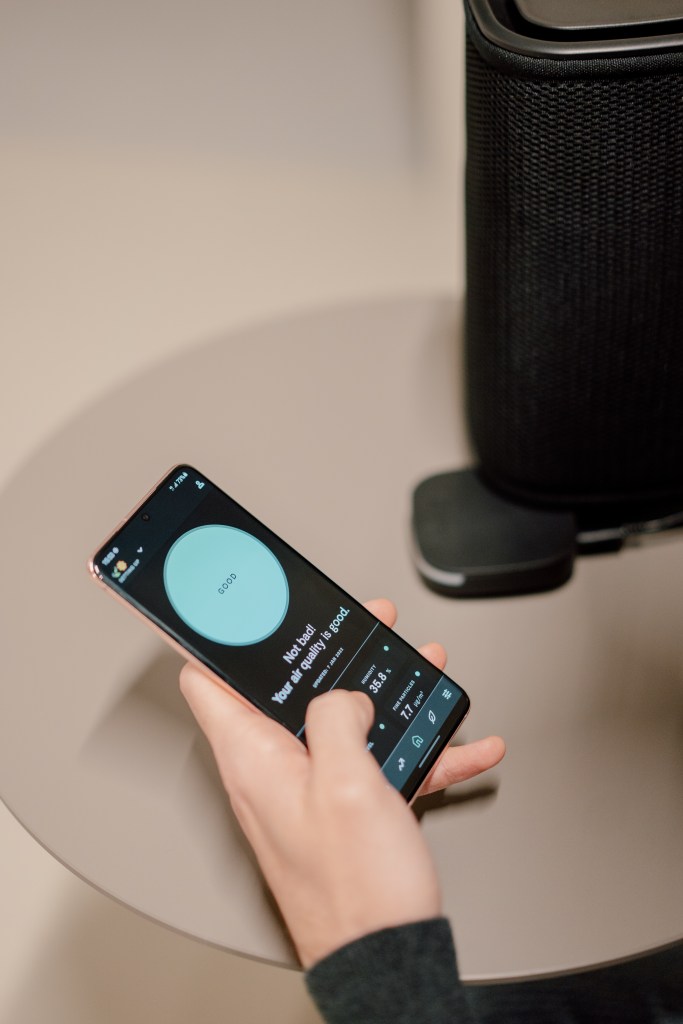
First, look at the data and see what is getting close to acceptable thresholds. If carbon dioxide is high, opening a window for a few minutes will be enough to refresh the indoor air. You might also be able to flush out some VOCs as well. However, if the outdoor air is cold and still, there is a risk that you might bring something nasty indoors.
The other thing you might be able to do is stop the activity that is causing the problem, or minimize the effect. If cooking is adding pollution, then use an extractor. If using a wood burner, then make sure that it is as efficient as possible, the flue is clean, the doors are closed and the wood is well seasoned.
With portable air purifiers, like Eteria, you can move the device closer to the source of the problem. The light-activated catalyst inside the machine can break down VOCs very quickly.
One thing to remember is that having information about indoor air quality should not be alarming.
Air quality monitors are completely dispassionate. They record and report on objective data and make no judgement about the activities that led to the data. High VOCs might be as a result of a room scenter, new perfume, a delicious meal or even a Christmas tree – the machine doesn’t know. However, if you do get an alert when you don’t have a reasonable explanation, you then have the option to start looking for the cause, which might be less benign.
Vitesy air purifiers (Eteria, Natede Smart and Natede Basic) are distributed in the UK to domestic and commercial customers by Nemesis Ltd
If you would like to learn more about indoor air quality or Vitesy’s excellent products, get in touch.